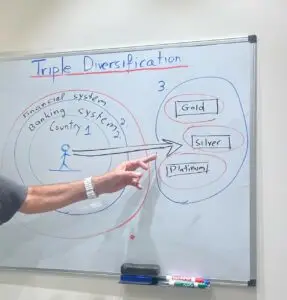DPF stands for Diesel Particulate Filter. It is a device installed in the exhaust system of diesel vehicles to reduce the emission of particulate matter (PM) or soot from the exhaust.
The DPF traps and stores particulate matter from the engine’s exhaust gases, preventing it from being released into the environment. Over time, the filter can become clogged with soot, reducing its effectiveness in trapping PM. To prevent this, the filter must be periodically cleaned or replaced, depending on the type of filter and the driving conditions.
DPFs are an important component of modern diesel engines, helping to reduce their environmental impact by limiting the amount of harmful emissions they produce.
how does a diesel particulate filter work
A diesel particulate filter (DPF) works by trapping and removing soot or particulate matter (PM) from the exhaust gases of diesel engines. The DPF is typically made up of a ceramic or metallic honeycomb-like structure with tiny channels or pores that trap the PM as it flows through.
The DPF operates in two stages: filtration and regeneration. During filtration, the exhaust gases from the engine flow through the DPF, and the particulate matter is trapped in the filter’s channels. This process reduces the amount of PM emitted into the environment.
Over time, the accumulated PM in the filter can cause a buildup of backpressure, which can eventually affect the engine’s performance. To prevent this, the DPF undergoes regeneration, a process that burns off the trapped PM and clears the filter.
There are two types of regeneration: passive and active. Passive regeneration occurs naturally when the exhaust temperature is high enough to burn off the PM, usually during high-speed driving or highway conditions. Active regeneration is a process initiated by the engine control unit (ECU), which raises the exhaust temperature to burn off the PM using a fuel injection system, a catalyst, or an electric heater.
In summary, a DPF works by trapping and removing particulate matter from diesel engine exhaust gases, reducing the amount of harmful emissions released into the environment. It then undergoes regeneration to burn off the trapped PM and clear the filter for continued use.
What are the benefits of using a DPF
The use of a diesel particulate filter (DPF) provides several benefits, including:
- Reduced particulate matter emissions: The primary benefit of using a DPF is a significant reduction in particulate matter emissions from diesel engines. The filter traps the soot and other fine particles from the exhaust, preventing them from being released into the environment. This results in cleaner air and improved public health.
- Improved fuel efficiency: A properly functioning DPF can improve the fuel efficiency of diesel engines by reducing backpressure in the exhaust system. This can lead to better engine performance and improved fuel economy.
- Compliance with emissions regulations: DPFs are an essential component of modern diesel engine emissions control systems. Many countries and regions have regulations that require the use of DPFs in diesel engines to reduce particulate matter emissions.
- Extended engine life: By reducing particulate matter emissions, a DPF can help to extend the life of diesel engines by reducing wear on critical engine components.
- Reduced environmental impact: By reducing particulate matter emissions, the use of a DPF can help to minimize the environmental impact of diesel engines, making them a more sustainable transportation option.
In summary, the benefits of using a diesel particulate filter include reduced particulate matter emissions, improved fuel efficiency, compliance with emissions regulations, extended engine life, and reduced environmental impact.
What are the consequence of removing a DPF from a vehicle
Removing a diesel particulate filter (DPF) from a vehicle can have several negative consequences, including:
- Increased emissions: DPFs are a critical component of modern diesel engine emissions control systems. Removing the DPF from a vehicle will result in increased emissions of harmful pollutants, including particulate matter, nitrogen oxides (NOx), and carbon monoxide (CO). This can lead to environmental damage and harm public health.
- Legal consequences: In many countries and regions, it is illegal to remove a DPF from a vehicle. Removing the DPF can result in fines, penalties, and legal repercussions for the vehicle owner and those who perform the removal.
- Reduced engine performance: The removal of the DPF can disrupt the flow of exhaust gases and cause increased backpressure, which can reduce engine performance and power. This can lead to decreased acceleration, reduced fuel efficiency, and increased engine strain.
- Reduced engine life: Removing the DPF can increase the wear and tear on engine components, leading to premature wear and damage. This can result in reduced engine life and the need for costly repairs or replacement.
- Voided warranty: Removing the DPF from a vehicle can void the manufacturer’s warranty, leaving the vehicle owner responsible for all repairs and maintenance.
In summary, removing the DPF from a vehicle can result in increased emissions, legal consequences, reduced engine performance, reduced engine life, and voided warranty. It is important to comply with emissions regulations and follow the manufacturer’s recommended maintenance schedule to avoid these consequences.
What are the consequences of not cleaning a DPF
Failing to clean a diesel particulate filter (DPF) can have several consequences, including:
- Reduced engine performance: As the DPF becomes clogged with particulate matter, it can restrict the flow of exhaust gases, leading to reduced engine performance and power. This can result in decreased acceleration, reduced fuel efficiency, and increased engine strain.
- Increased emissions: If the DPF becomes completely clogged, it may no longer effectively trap particulate matter, leading to increased emissions of harmful pollutants such as particulate matter, nitrogen oxides (NOx), and carbon monoxide (CO).
- DPF failure: If the DPF becomes too clogged, it may become damaged and fail. This can result in costly repairs or replacement of the DPF and other engine components.
- Reduced engine life: A clogged DPF can cause increased engine strain, leading to premature wear and damage to engine components. This can reduce the engine’s lifespan and result in costly repairs or replacement.
- Risk of fire: If the DPF becomes excessively clogged, it can become overheated and pose a risk of fire, which can damage the engine and surrounding components, as well as pose a safety hazard.
In summary, failing to clean a DPF can lead to reduced engine performance, increased emissions, DPF failure, reduced engine life, and a risk of fire. It is important to follow the manufacturer’s recommended maintenance schedule for the DPF to avoid these consequences.
What is the difference between a passive and an automatic active regeneration
Passive regeneration occurs naturally during normal driving conditions when the temperature of the exhaust gas is high enough to burn off the particulate matter. Passive regeneration is not always effective, especially for vehicles that are used for short trips or in cold weather conditions.
Active regeneration is a process in which extra fuel is sent to the exhaust, so that its temperature can be raised in order to burn off the excess soot which is starting to block the DPF. Active regeneration is a more controlled process that is started by the engine control unit (ECU). Active regeneration happens roughly every 300 miles and is triggered by the ECU once the soot level is approaching 40 to 45%. Automatic active regeneration is a part of an installation package, in this case, it is not necessary to intervene or have knowledge of the vehicle operator.



